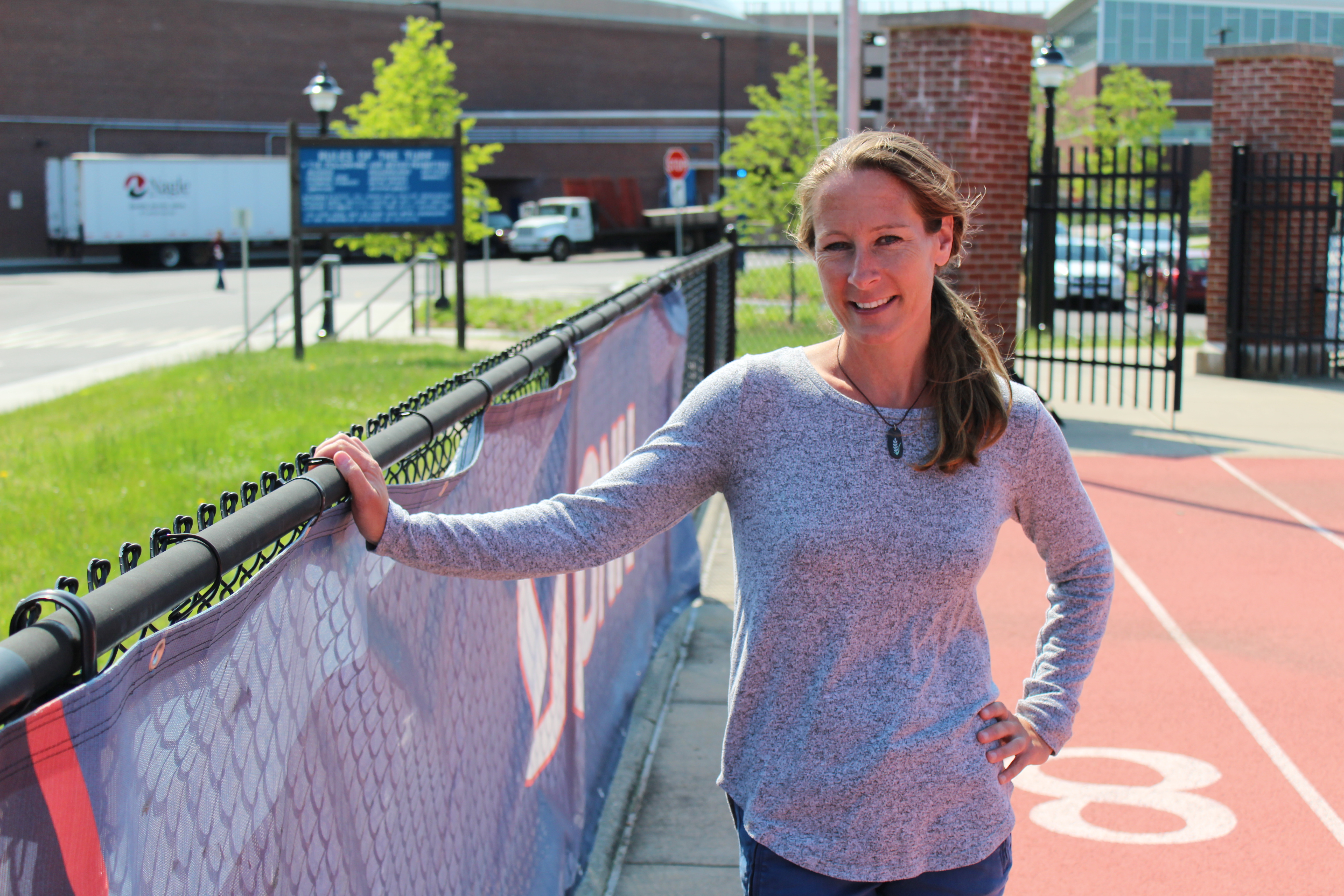Beth Taylor is a lifelong runner and she is someone who has been lucky enough to turn her passion for exercise and health in to a career in kinesiology.
Taylor is an associate professor of kinesiology at the University of Connecticut and director of exercise physiology research in Cardiology at Hartford Hospital.
After graduating from Pennsylvania State University in 2008 with a Ph.D. in kinesiology, Taylor was hired as a research scientist at Hartford Hospital where she worked with Dr. Paul Thompson, the Chief of Cardiology and The Athletes’ Heart Program. Through her work with Thompson, Taylor was introduced to the world of sports cardiology.
“I loved the world of sports cardiology and I’ve continued to work with Dr. Thompson,” Taylor says.
By working at both Hartford Hospital and UConn, Taylor has the unique opportunity to gain first-hand medical insights from the doctors like Thompson who see patients directly and then apply them to her research at UConn.
“The benefit with collaborating is it’s very easy to get clinical populations and medical insights at Hartford Hospital,” Taylor says. “And we can do things through UConn that we could never do at Hartford Hospital because it’s not a research facility. It’s a perfect combination.”
One of the most interesting projects Taylor has worked on started with an incident that hit close to home. Taylor’s sister flew out from Seattle to run a half-marathon with her, but when Taylor’s sister returned home, she got a blood clot—something very unusual for a young person in good shape.
“At the time no one really understood why this happened because she was a relatively healthy person and you don’t usually see blood clots in athletic people,” Taylor says.
This question inspired Taylor to conduct field studies at the Boston and Hartford Marathons, drawing and analyzing blood samples from athletes who flew to compete in the races to assess their risk for blood clots.
Over the last five years there have been more studies about this issue, but when Taylor began her research, she was breaking new ground.
“When we did our studies, no one had ever really assessed this risk directly in a study,” Taylor says.
A follow-up study showed that wearing compression socks at some point in the travel or event probably help reduce the risk of blood clots.
“Compression socks probably do help reduce the risk of blood clots, but it’s not as clear-cut and easy to explain,” Taylor says.
One of the most challenging aspects of doing this unique field study was the amount and range of unknown and uncontrollable variables.
“You spend all this time on logistics, but after all of it’s done, the data can look really messy because there could have been 10 things that happen to a runner that day that affect your results that you can’t account for,” Taylor says.
Taylor’s lab is always on the hunt for additional athletes to enroll in studies. They’ve launched a new website devoted to exercise and blood clots to bring more attention to the issue.
Another focus for Taylor is statins, cholesterol-lowering drugs. Statins are one of the most commonly prescribed drugs in the world, but they can cause a host of serious side effects including the breakdown of skeletal muscle cells and muscle pain and weakness.
Currently there is no diagnostic test criteria to determine the effects of statins and how they should be treated. Taylor hopes to someday change that through her research.
Another project Taylor is working on is a collaboration with Robert Astur, an associate professor in psychology at UConn, studying the impact of regular exercise on a person’s risk for Alzheimer’s disease.
“We’ve started doing new research on the connection between the hippocampus and exercise,” Taylor says.
The hippocampus is the part of the brain responsible for memory function and one of the first areas to be affected by the onset of Alzheimer’s. In their study, Taylor and Astur will have participants take part in a virtual reality maze which focuses specifically on utilizing the hippocampus.
Taylor emphasizes that for her research to be possible, she values the support and resources of those around her.
“The longer you’re in research, the more you realize it’s not a single person game,” Taylor says. “You need students, graduate assistants, faculty, and colleagues. And I’ve had some spectacular ones.”
One person who stands out to Taylor is Linda Pescatello, a fellow UConn professor of kinesiology with whom Taylor has collaborated on many projects.
“She’s been a real mentor to me,” Taylor says. “She runs a really well-managed lab and that taught me a lot. It’s important for a newer researcher like I was to have someone like that.”
Taylor says she is grateful that she has had the opportunity to do research that impacts so many people.
“I study very common things. And the more I talk to people about the work I’m doing, the more inspired I am because everyone is affected by these things or has a connection to someone who is,” Taylor says. “It’s really great that I’m inspired by the research I do. I’m grateful and humbled.”



